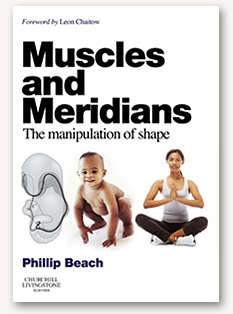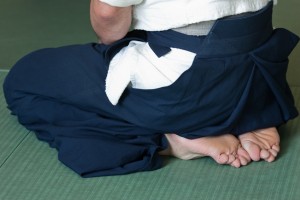Acupuncture Meridians
/ For a hundred or so years people enamored by acupuncture have put forward theories about how acupuncture works. A few of these theories have made the stretch from possibility to plausibility. (See here for a partial list.) For the most part they rely on endocrinology and the chemistry of the brain. No theory, until now has been put forward which explains why the meridians are where they are and simultaneously offers a plausible explanation of how the work.
For a hundred or so years people enamored by acupuncture have put forward theories about how acupuncture works. A few of these theories have made the stretch from possibility to plausibility. (See here for a partial list.) For the most part they rely on endocrinology and the chemistry of the brain. No theory, until now has been put forward which explains why the meridians are where they are and simultaneously offers a plausible explanation of how the work.The new theory offers that meridians are "emergent lines of shape control," which effect the body through overlapping "contractile fields." (Wooh!) It is put forward in a book called Muscles and Meridians, the Manipulation of Shape, by Phillip Beach. While reading this rather long and dry text, something shocking occurred to my fragile mind. For someone steeped in Western Civilization, to even entertain the possibility that acupuncture is efficacious we have had to ignore an enormous affront to our sensibilities. The affront is that knowledge of the precise lines of the meridians could have been discovered and mapped and then passed down for 2000 years of recorded history as a form of applied medicine without anyone ever learning how the meridians were originally mapped! Oh, you might hear people say, they were just felt. But come on, that is so easy to test. You just find a barbarian who hasn't memorized the locations of the meridians and teach him to feel! Zhen Da! He will draw them for you! But if this ever happened, there are no records of it. One would think this would be a priority no? I am of course willing to believe that people have mapped and re-mapped the meridians many times over, and then then just kept their methods a secret. That's cool, but even if that were true, (and we don't have any evidence that it is) it's still a huge affront to my Western Civilization sensibilities.
Anyway, I sense that Phillip Beach felt the affront and was motivated to do something about it. Internet hero, Elisabeth Hsu has explained that the meridians were developed on the surface of the body and only later were connected to the internal organs. Beach leverages this clue well. It is also likely that many of the "points" were developed independently from the meridians. Some points are easy to explain simply in terms of trail and error as the best spots to manipulate and maneuver a person passively receiving a massage, or actively resisting a martial arts technique. Beach also leverages this point in his theory. Another clue is the widespread idea in Traditional Chinese Medicine that only a few of the meridians develop in utero, some appear at the moment of birth, and the rest develop slowly over the first 5 or so years of human activity. He uses this information in his theory as well, but if I wasn't already familiar with the idea I doubt I would have understood what he was talking about. Unfortunately the book needs another edit.
Never the less, its a great theory. He draws extensively on developmental embryology to show how different regions of the body are related and belong to the same contractile field. A contractile field is pretty easy to understand. If I poke you with something sharp, you will move away from the point in a very specific way by contracting certain parts of your body. If I poke you in a different place, you will contract differently only if I have poked you in a different contractile field. If I poked you on the same contractile field, but in a different spot than the first time, you will still respond pretty much the same way you did the first time. But if I cross an invisible line suddenly your contractile reaction will be different. This idea has been studied extensively in leeches! Leaches have only 4 contractile fields but because the fields overlap, you can get 8 different contractile responses from a leach. But only 8, no matter where you poke. However if you poke a leach with two needles you can get some composite reactions. Anyway that's the basic theory, the meridians aren't necessarily the boarder between two contractile fields, they are lines on the body which strengthen, weaken, or resolve the relationships between contractile fields.
Now that seems testable, as long as you have enough of a military attachment to deter lawsuits.
That probably should have been the whole book, but I suspect Beach wanted to demonstrate how overall shape changing or perhaps shape re-ordering relates to medicine. I mean, I suppose at this point someone could try to argue that posture and alignment play only a small role in over all health, illness and disease, because methods focused singularly on posture have not passed muster (ie. randomized, peer reviewed fights to the death). But the reality is that almost any chronic problem will eventually show up in the bones. Archeologists have taught us that.
 Seiza
SeizaBeach continues his argument by discussing his own idiosyncratic clinical experience, and makes some interesting points. He describes 8 basic sitting postures, squatting, seiza, kneeling on the heels with the toes curled forward, seiza on one foot while squatting on the other, pike, on the butt with legs crossed, and on the butt with soles of the feet together. He says that these ways of sitting are all good indicators of the proper functioning or integration of contractile fields. When a patient presents with X problem and has trouble getting into one of these "shapes," it becomes part of their prescription to practice trying to get into it. Not hugely convincing, but it did make me think that these seated postures ought to be part of a routine check-up. If you had to demonstrate your ability to sit in all these positions when the doctor was listening to your breathing and tapping on your knee, it would eventually become part of peoples self-health evaluations. That would be a mighty good thing. I can just see all the mothers fretting that their teen-aged sons have flunked "squatting."
Lastly, Beach spins some fun stuff about the feet. He calls shoes, "sensory deprivation chambers." Who knew? Honestly, this part of the book excellent. He suggests that the vast majority of lower back problems can be fixed by walking barefoot in an uneven rock garden for 20 minutes a day. The feet are very sensitive, they have the capasity to resolve and change complex structures in the lower back. In my own experience many people are suffering needlessly because they never walk on uneven ground. I don't just mean hills or groomed paths. I mean really uneven rocky ground. Scrambling and scurring over rough terrain resets all the components of locomotion--balance, spacial awareness, rhythm, shrinking, expanding, alignment, liquid mass manipulation, and force transmission through the bones.
Having pondered this book for about two months, I have two objections. The first is that he just dodges the "What is Qi" problem. This must have kept him up at nights, finally deciding that the theory stood up better without any explanation of qi. But this leads to the second objection, how do we explain the direction of qi flow in the meridians? If Beach's theory gets traction, and I think it should, we will likely see the notion of qi flow broken down in to different types of flow, each with distinct properties.

